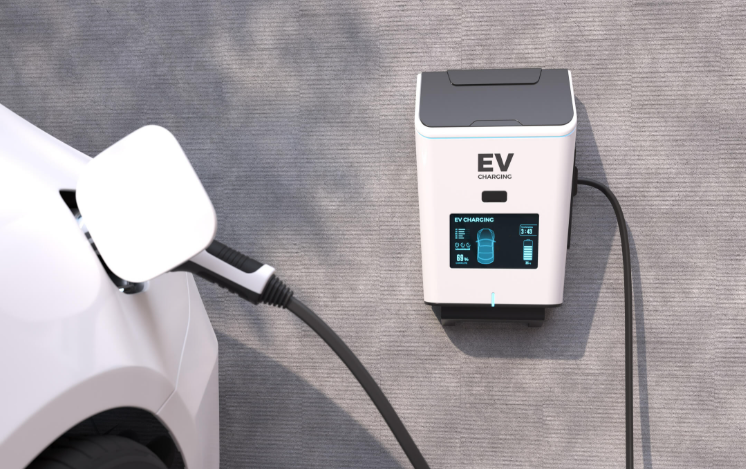Chargers 101: Understanding Wattage, Voltage, and Amperage

Chargers have become a vital part of our daily lives, powering not just smartphones but also laptops, wearables, headphones, and other smart devices. Yet, when you look closely at their specifications, you’ll often see terms like wattage (W), voltage (V), and amperage (A). These technical details can feel confusing, but they are essential for understanding how your device charges and how safe and efficient the process is.
In this guide, we’ll break down what these terms mean, how they interact, and how choosing the right charger can improve your device’s performance and battery health.
1. Wattage: The Speed of Power Delivery
Wattage is the measure of how much power a charger can deliver to your device per second. It’s calculated using the formula:
Wattage (W) = Voltage (V) × Amperage (A)
- Low-wattage chargers (5W-10W): Common in older chargers, slower to charge modern devices with larger batteries.
- Mid-range chargers (18W-30W): Typically support fast charging for smartphones and tablets.
- High-wattage chargers (45W-100W+): Often used for laptops, large tablets, or phones with ultra-fast charging technology.
A higher-wattage charger can charge compatible devices faster, but only if your device supports that level of input. Using a 65W charger with a phone that only accepts 18W won’t damage it, but it won’t charge faster either.
2. Voltage: The Pressure of Electricity
Voltage refers to the electrical potential or pressure that pushes electric current into your device. Think of it like water pressure in a hose – higher pressure pushes more water through.
- Standard USB chargers typically deliver 5V.
- Fast charging protocols can increase this to 9V, 12V, or even 20V under controlled conditions.
However, too high a voltage without proper regulation can damage your device. That’s why both the charger and the device communicate through smart charging chips to determine the optimal voltage level.
See also: The Science Behind the Cleanliness: The Techniques Used by Professionals
3. Amperage: The Flow of Electric Current
Amperage (measured in amps, A) is the volume of electric current flowing from the charger to the device.
- Higher amperage = more current flow = faster charging, but only if the device can handle it.
- Low-quality chargers may not deliver consistent amperage, causing slower or unstable charging.
For example, a 5V/1A charger delivers 5 watts, while a 5V/2A charger delivers 10 watts, effectively doubling the charging speed if your device supports it.
4. How These Three Work Together
The relationship between wattage, voltage, and amperage determines how efficiently your charger powers your device. A charger rated 9V/2A delivers 18 watts, while a 5V/3A charger delivers 15 watts.
Modern chargers dynamically adjust voltage and amperage to:
- Speed up charging when the battery is low.
- Slow down charging to protect the battery as it nears full capacity.
- Prevent overheating or overcharging for safety.
This is why a high-quality charger, with intelligent power management, can make a huge difference compared to cheaper alternatives.
5. Fast Charging vs Regular Charging
Fast charging relies on increased wattage, achieved by:
- Higher voltage (e.g., 9V instead of 5V).
- Higher amperage (e.g., 3A instead of 1A).
- Or a combination of both, controlled by protocols like Qualcomm Quick Charge, USB Power Delivery (PD), or proprietary solutions.
Using the wrong charger (one that’s underpowered or uncertified) can lead to:
- Slower charging times.
- Overheating.
- Potential long-term damage to your battery.
6. The Importance of Certified, High-Quality Chargers
Not all chargers are built with the same standards. Some low-cost options lack proper voltage regulation or safety features, posing risks such as:
- Battery degradation over time.
- Device overheating during charging.
- Electrical hazards like short circuits or surges.
For best results, always choose chargers that:
- Match your device’s required wattage, voltage, and amperage.
- Are certified for safety and compatibility.
- Use high-quality materials for long-term durability.
Why Ronin Chargers Stand Out
When it comes to safe and reliable charging, Ronin is a brand trusted by thousands of tech users. As a leading name in smart wearables and tech accessories, Ronin designs chargers that:
- Support fast and intelligent charging protocols, adapting voltage and amperage automatically for your device.
- Include built-in protection circuits against overcurrent, overheating, and short circuits.
- Deliver consistent wattage to keep your device safe while achieving maximum speed.
- Are built to ISO 9001 and UKAS-certified standards, ensuring quality and durability you can depend on.
With Ronin chargers, you don’t just get power delivery, you get precision, safety, and real performance that protects your devices and keeps you connected without compromise.
Final Thoughts
Wattage, voltage, and amperage might sound technical, but they are key to understanding how chargers work and why choosing the right one matters. Using a high-quality, certified charger ensures:
- Faster, more efficient charging.
- Better long-term battery health.
- Protection against power-related issues.
Brands like Ronin make it easy to choose the right charger by combining advanced technology with strict safety standards, ensuring you get real, reliable power every time you plug in.
